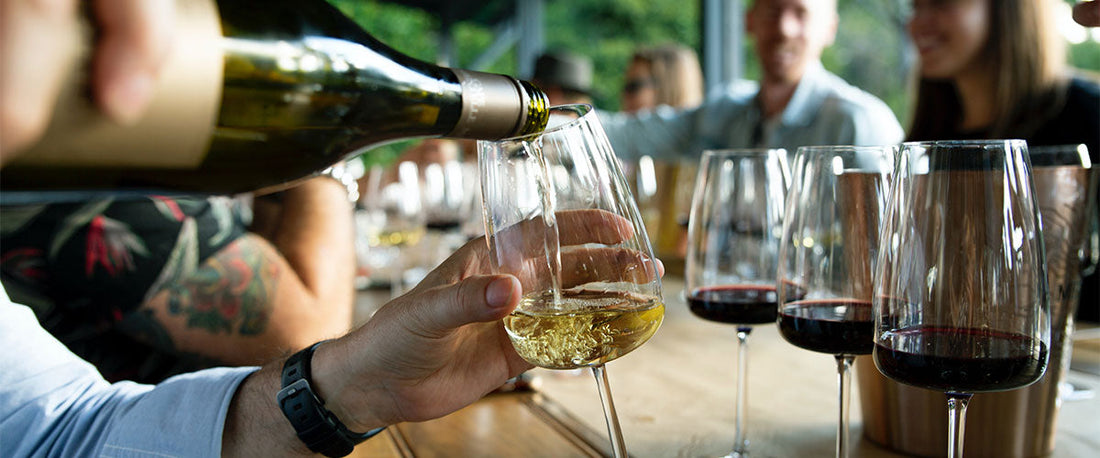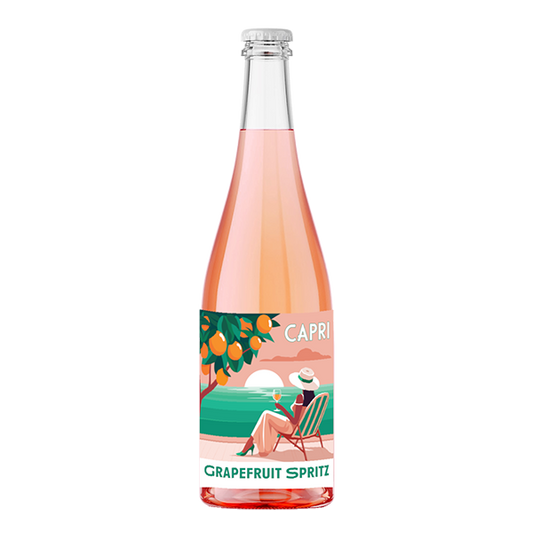
How to Taste, Describe, Pair & Decant Wine – A Beginner-Friendly Guide
Share
Estimated reading time: 6 minutes
Wine tasting may seem intimidating, but understanding the basics will help you appreciate every glass more deeply. Whether you're a curious beginner or refreshing your skills, this guide walks you through how to taste, describe, pair, and decant wine with confidence.
A Personal Note on Wine Tasting
After more than 30 years in wine, I’ve tasted everything from raw barrel samples to wines poured from the world’s most extravagant packaging. And honestly? While I know the technical tasting methods, I still can’t always pick out every fruit or spice, nor identify every varietal or region blind. But that’s not the point.
What changed my relationship with wine was adopting professional tasting habits. Being almost forced to find words for what I tasted, smelt, and felt pushed me to understand my own palate better. The more I practised, the more fun tasting became—whether on my own, with friends, or with winemakers. And the best part? Even if I couldn’t speak their language, winemakers always understood me.
That’s the beauty of wine: it’s not about being a snob or chasing perfection—it’s about connecting with what’s in the glass.
You don’t need to describe wine like a textbook. I’ve compared Pinot colour to raspberry cordial and thought of Shiraz as plum skin. What matters is finding what makes sense to you and being consistent. Over time, you’ll surprise yourself with how much you can tell about a wine without even looking at the label. And honestly, it didn’t take long for that to happen.
Remember—swirling, smelling, and tasting aren’t about looking good. They’re about making sure you get the best out of the wine you’ve paid for and are about to enjoy.
Step 1: How to Taste Wine – The 4 Simple Stages

1. Look
- Tilt your glass and observe the wine’s colour, clarity, and intensity.
- Describe it how it makes sense to you. Maybe that pale rosé reminds you of rose petals, or the deep red of a Shiraz feels like plum jam.
2. Swirl
- Gently swirl the glass to release aromas. This also helps gauge viscosity (the "legs" or "tears").
3. Smell
- Inhale deeply to pick up fruit, floral, herb, spice, or earthy notes.
- Use references that work for you. If it reminds you of grandma’s jam or wet forest floor after rain, say it that way.
4. Taste
- Sip and let it coat your palate.
- Assess sweetness, acidity, tannin (if red), body, and finish (how long the flavours linger).
- Again, use your words. If a wine feels like biting into a ripe plum or has the tang of granny smith apples, that’s your reference.
Step 2: How to Describe Wine Simply
Use these five elements to describe what you experience:
- Fruit Character – Red fruits, black fruits, citrus, stone fruits.
- Sweetness Level – Dry, off-dry, medium, sweet.
- Acidity – Crisp, zesty, mouth-watering or soft and round.
- Tannins (Reds) – Grippy, smooth, drying, or velvety.
- Body – Light, medium, full-bodied.
Pro Tip: Don't be afraid to put things in your own words. Wine is personal. The more you taste and describe it your way, the better you get.
Step 3: How to Pair Wine with Food

Pairing wine is about balance, not rules. Start with these basics:
- Acidic Wines (like Sauvignon Blanc) pair well with rich, fatty dishes.
- Tannic Reds (like Cabernet Sauvignon) love protein-rich foods like steak.
- Sweet Wines (like Riesling or Moscato) balance spicy or salty foods.
- Light-bodied Reds (like Pinot Noir) pair easily with poultry or mushrooms.
- Sparkling Wines complement salty, fried, or creamy foods beautifully.
Remember: What grows together, often goes together – Italian reds with Italian cuisine, French whites with French cheeses.
Step 4: When and Why to Decant Wine

Decanting improves some wines by softening tannins and opening up aromas.
When to Decant:
- Young, tannic reds (Cabernet, Shiraz) benefit most.
- Older wines with sediment need gentle decanting.
- Whites rarely need decanting but can be aerated briefly for complexity.
How to Decant:
- Pour wine slowly into a decanter or jug, avoiding sediment.
- Let it breathe: 30-60 minutes for younger reds, less for older wines.
Final Thoughts
Tasting, describing, pairing, and decanting wine doesn't require fancy equipment or expert knowledge. With practice, you'll naturally notice more and enjoy every bottle even more.
Explore our wine collection for styles worth tasting and pairing at home.
Me? I reckon I can pick a Barossan Shiraz from any blind tasting—how do you think you’d go?




















